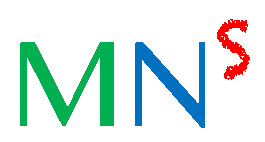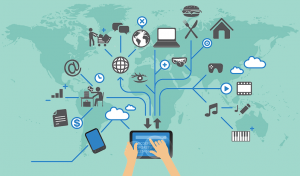Difference between revisions of "Course:Advanced Network Computing"
| Line 76: | Line 76: | ||
| style="height:20px; width:80px; text-align:center; background-color:red;color:white;" | 20 | | style="height:20px; width:80px; text-align:center; background-color:red;color:white;" | 20 | ||
| style="height:20px; width:80px; text-align:center; background-color:red;color:white;" | 27 | | style="height:20px; width:80px; text-align:center; background-color:red;color:white;" | 27 | ||
| style="height:20px; width:80px; text-align:center; background-color: | | style="height:20px; width:80px; text-align:center; background-color:red;color:white;" | 28 | ||
|- | |- | ||
! scope="row"| 20:40-21:10 | ! scope="row"| 20:40-21:10 | ||
| Line 127: | Line 127: | ||
# | # | ||
# 曾帅, 李宁发, Knowledge-Defined Networking, SIGCOMM 2017 | # 曾帅, 李宁发, Knowledge-Defined Networking, SIGCOMM 2017 | ||
# | # 张司霖, 周香君, INFOCOM, Service Entity Placement for Social Virtual Reality Applications in Edge Computing, 2018 | ||
# | # | ||
# 邱凯,陈安然, Fire in Your Hands: Understanding Thermal Behavior of Smartphones, 2019 | # 邱凯,陈安然, Fire in Your Hands: Understanding Thermal Behavior of Smartphones, 2019 | ||
Revision as of 10:53, 14 September 2020
You can leave your questions and suggestions in the discussion board.
Introduction
This course will introduce recent advances in network computing. Specifically, it contains four sections: SDN/NFV, Edge Computing, IoT, and Network Big Data. In SDN/NFV, we mainly talk about two topics: Consistent update, traffic engineering and VNF embedding. In Edge Computing, we mainly talk about the topics of deployment and task offloading. In Internet-of-Things, we mainly talk about the topics of low-power protocols, long-range IoT and IoT applications/systems. In Network Big Data, we mainly talk about the topics of wireless sensing and various applications based on smartphone big data.
Reference books:
- Software Defined Networks: A Comprehensive Approach, 2014
- Network Function Virtualization: Ken Gray, Thomas D. Nadeau, 2016
- Big Data and The Internet of Things, 2015
- Edge Computing: From Hype to Reality, 2019
Requirements (2020)
Final score = 40% x class presentation+ 60% x exam.
Class presentation
The class score comes from the class presentations.
Paper selection
Each student is required to participate in a presentation (15-20min) of a research paper selected from the top conferences/journals in network computing. Each presentation allows up to three presenters. The third presenter will have 10 points fewer than the first two members.
Conference/journal rankings:
- Class A: SigComm/INFOCOM/MobiCom/ToN/TMC/TPDS/JSAC/TC/NSDI/
- Class B: MobiHoc/MobiSys/SenSys/ICDCS/IPSN/ICNP/IWQoS/other IEEEACM Transactions
- Class C: SECON/MASS/DCOSS/Posters from Class-A conferences
If you have no idea after gone through the above list, you may select papers from the list.
Time slots
We have in total 32 time slots for presentations. Please send a mail to "anc_course@mobinets.org" and apply for a specific slot. The format of the mail is shown as below.
Title: 时间序列申请 (Time slot application) Mail: 论文 (Paper info):XXXXX, Conference/Journal name, Year 申请序列 (Preferred slots):14,21,1 演讲成员 (Members): 吴亦凡 (Name1);201901233210 鹿晗 (Name2); 201801233211 赵本山 (Name3); 201701233212
Please refer to the following time table before applying for a specific time slot. Green blocks are available slots.
| Time\Date | 10/12 | 10/19 | 10/26 | 11/02 | ||||
|---|---|---|---|---|---|---|---|---|
| 19:30-20:00 | 1 | 2 | 9 | 10 | 17 | 18 | 25 | 26 |
| 20:05-20:35 | 3 | 4 | 11 | 12 | 19 | 20 | 27 | 28 |
| 20:40-21:10 | 5 | 6 | 13 | 14 | 21 | 22 | 29 | 30 |
| 21:15-21:45 | 7 | 8 | 15 | 16 | 23 | 24 | 31 | 32 |
Presentations:
- 王子言, 胡诗琪, 许桐, Delay-Optimal Distributed Edge Computing in Wireless Edge Networks, INFOCOM 2020
- 邵安, 周家豪, Probabilistic Verification of Network Configurations, SIGCOMM 2020
- 谢雨岑, 周莉, A Structured Bidirectional LSTM Deep Learning Method For 3D Terahertz Indoor Localization, INFOCOM 2020
- 陈程, 杨森, Camel: Smart, Adaptive Energy Optimization for Mobile Web Interactions, INFOCOM 2020
- 唐歆宇, 王雨翰, Shifter: A Consistent Multicast Routing Update Scheme in Software-Defined Networks, ICNP 2018
- 李鑫, 罗宇豪, MUTE: Bringing IoT to Noise Cancellation, SigComm 2018
- 杨深, 刘青青, Internet-of-Microchips: Direct Radio-to-Bus Communication with SPI Backscatter, MobiCom 2020
- 王嘉程, 田婧暄, Server-driven video streaming for deep learning inference, SigComm 2020
- 王俊, 朱道冰, Millions of Tiny Databases, NSDI 2020
- 何腾洋, 董广县, Deep Learning based Wireless Localization for Indoor Navigation, MobiCom 2020
- 许凯, 张志轩, 邓昭泳, Secure Short-Packet Communications for IoT, TWC 2019
- 曾耀海, 王景宽, Predictive Scheduling for Virtual Reality, INFOCOM 2020
- 喻杰林, 彭冲, HPCC: high precision congestion control, SIGCOMM, 2019
- 刘崇梽, 刘佳玺, Firecracker: Lightweight Virtualization for Serverless Applications, NSDI 2020
- 王雄, 刘江澍, Beyond 5G: Reliable Extreme Mobility Management, SIGCOMM 2020
- 张艺乐, (How Much) Does a Private WAN Improve Cloud Performance?, INFOCOM 2020
- 张健飞, CarMap: Fast 3D Feature Map Updates for Automobiles, NSDI 2020
- 廖思淇, OmniMon: Re-architecting Network Telemetry with Resource Efficiency and Full Accuracy, SIGCOMM 2020
- 米鑫, 李科, When Edge Meets Learning. Adaptive Control forResource-Constrained Distributed Machine Learning, INFOCOM 2019
- 陈晨, 何攀, Interpreting Deep Learning- Based Networking Systems, SIGCOMM 2020
- 何雄威, 赵成章, Towards Software-defined Fog Computing via Named Data Networking, INFCOM 2019
- 高磊, 龚凯, EagleEye: Wearable Camera-based Person Identification in Crowded Urban Spaces, MobiCom 2020
- 丛荣, 付璐伟, Collaborate or Separate? Distributed Service Caching in Mobile Edge Clouds, INFOCOM 2020
- 程明坤, How to Distribute Computation in Networks, INFOCOM 2020
- 曾帅, 李宁发, Knowledge-Defined Networking, SIGCOMM 2017
- 张司霖, 周香君, INFOCOM, Service Entity Placement for Social Virtual Reality Applications in Edge Computing, 2018
- 邱凯,陈安然, Fire in Your Hands: Understanding Thermal Behavior of Smartphones, 2019
Exam
The exam will contain two types of questions: Concept understanding (7 questions) and problem-solving (2 questions). Don't worry if you do not major in computer networks because all questions will be selected from class tests (answers will be discussed in class).
Bonus system
You have chance to get bonus points before the presentations and the final exam. Here are the ways how you get bonus:
- Select papers from top venues.
We encourage all students to select papers from the Class-A conferences and journals.
- A Class-A paper gets 4 bonus points for presentation.
- A Class-B paper gets 2 bonus points for presentation.
- Select earlier time slots
As most of you have no experience of public presentations, I believe pioneers will take more pressure. As a result, the earlier you do the presentation, more bonus you get. Specifically,
- time slots 1-6 get 3 bonus points
- time slots 9-14 get 2 bonus points
- time slots 7,8, 17-22 get 1 bonus points
- Raise questions to presenters
To encourage the discussion of the presentation, each raised question will be given a 2 points bonus. Each student can gain 6 bonus (three questions) points at most.
Slides
The slides will be sent to all students in class. Note: the questions and answers will not be shared.
Reference books:
- Software Defined Networks: A Comprehensive Approach, 2014
- Network Function Virtualization: Ken Gray, Thomas D. Nadeau, 2016
- Big Data and The Internet of Things, 2015
- Edge Computing: From Hype to Reality, 2020
Referenced links:

